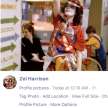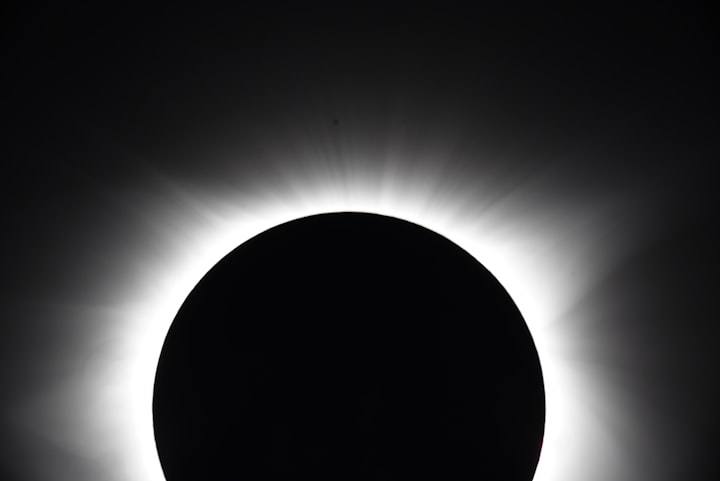
Events that change the course
What started as a swim with the dolphins twenty years ago, became a life changing event that turned my focus toward becoming environmentally conscious. The experience set a plan for eco involvement for the future that would involve more than one project.
For my birthday in Cincinnati Ohio one year, all of my teaching buddies knew that I had a special deep connection to dolphins, so they decided to chip in for a dolphin swim on a dive boat in Marathon Key West. There were twenty people that went out that day and we looked forward to getting into the calm Atlantic to connect with dolphins. At one point in the swim, myself and a paired buddy separated from the group. I spotted a Pod of dolphins and dove deeper to watch them perform playful acrobatics. One young dolphin circled around me a few times and got as close as a staring match. The closeness of this sea creature made me realize that we were all connected. Perhaps we were one in the same where all of life began. I was swirling under the ocean in with these thoughts. I would come up for air, and dive again to experience this gentle communion.
On one exhale, I was frantic, because I had become lightly tangled in a fishing line. Although my neck and chest were not wrapped in this material, my arm was tightly looped in the nylon cord. In this vortex of flotsam were several plastic bottles and somebody’s sunglasses. The dolphin that befriended me, surfaced simultaneously with a warning sound that was older than his young years. He was determined to get assistance for me by expelling a series of loud calls. He knew on some level that I was in danger, and had to get some human attention. We became involved in a helpmate safety dance and I realized that the dolphin was an intelligent creature with a heart and soul. At that moment in gratitude for helping me out of this situation, I promised him, that I would do my part to help heal the environment. The captain jumped in and cut me free, and we watched him swim off with one final look back at me. At that moment I heard him communicate “I set you free, now we can all work together.”
The conversation on the boat included the captain’s alarming stories about his ocean voyages. He said that the news didn’t cover a fraction of what was going on as far as 25 miles off shore. He described small oil spills, dead fish, sewage and masses of floating plastics that surrounded his boat. His stories impacted all of us in such a way, that we realized that each of us had a responsibility to do our part.
When I got back to Ohio, I couldn’t wait to share my experiences with my class. When the kids heard about my mishap with the fishing line, they asked if they could be part of plan to become more active in the eco community. In those days, families were just starting to reduce waste by bringing canvas bags to the grocery stores, and carpooling to the city. Awareness became the moniker and slowly but surely change was happening.
In my world, I started collecting cereal boxes and stashed them in my mattress. I didn’t have a recycling outlet, but I knew that I would eventually start or invent something. When my partner bumped into the mattress, and boxes flew out all over the place, we had a good comic relief laugh. I knew something had to be done.
At school the kids were in the middle of our student planning discussions, we decided to build a papier- Mache dolphin to be our eco Mascot. Good use of newspapers right? The artwork was brought outside and in the middle of a tornado, the class had to run in and take cover. When I returned to the paper mulch after the storm, I squeezed out the water and realized that the material was marketable. Now if we could get a paperboard company on board, we would be saving trees and driving a new market. The trick was to convince the company that our collectible paper would be part of their Post-consumer materials. The school would be the home base and people from the neighboring cities would bring in their month long collections of cereal boxes. We contacted Cincinnati Paper Board and found out that we would actually be one of the first programs in the country to collect cereal boxes to make post-consumer material.
They agreed with curious speculation and reached out to the Rumpke Waste and Recycling Company. Rumpke supplied us with one 2000 pound yellow truck once a month for an entire year. Long enough to encourage the city of Cincinnati to develop its own curbside program. This was a memorable time, as it coordinated our school, roused families to save their boxes, minus the plastic and revved up an interest in citizen created post-consumer waste.
In that year, families came to the school in car loads from Cincinnati and all the neighboring communities. The news about the program spread quickly and everyone wanted to be in support. The children and their parents volunteered at the school and coordinated the pick up efforts.
I even fell out of the monster garbage truck onto thousands of pounds of collected paper, and people didn’t know whether to laugh or cry. In the spirit of humor, and to attract attention to the program I developed a persona called “The New Trend Bag Lady”. I decided that a personality associated with the paperboard collection could be a magnet for our program. My goal was to teach the community about reducing waste and supporting a Kroeger supported recycling program to recycle grocery bags. Every weekend I volunteered to lead an eco- tour through the Kroeger’s grocery store. People wanted to know if the cereal companies were ever going to use the Cincinnati paper waste. The newspaper and television studios were fascinated with our campaign to make a difference. They even asked myself and some teachers to ride along with them to the recycling plant to make sure everything was being sorted correctly. I even made a Don’t Dump It Stew, which was vegetarian and became famous. It tasted almost as good as the world famous Cincinnati Chili.
Recipe For Don’t Dump It Stew
Two cans of black beans
Two cans of kidney beans
Two cans of tomato sauce
1/2 onion
1/2 cup shredded carrots
Cook in the Instapot, or you can just put in a pot and simmer on low for an hour until all the flavors combine. Salt to desired taste. Add raw chopped onion on top, some Greek yogurt, avocado... tortilla chips!
Then one day, I got a call from the Kellogg’s company. They featured a story about a baseball player on the back of a cereal box, but were very interested in our school’s saving trees campaign. Throughout the country at that time with consumer demands at the helm, there was a realization that Post-consumer material was the wave of the future.
In the grocery stores, we started to see
Post-consumer percentages on the back of various box boards
Today, close to 85% of the boxboard is made of Post-consumer material and 76% of the flexible packaging is recyclable globally. By 2025 the Kellogg goal is to produce entirely compostable, recyclable and reusable materials.
As our project escalated that year, I was happy to hear from Cincinnati Paper Board. They invited a group of us down to the plant. They had a surprise for us. We watched with fascination, as our thousands of pounds of collected school boxes got churned through a vat process and ultimately smoothed into paper. We were so excited and humbled as our school idea had worked.
I silently did a thankful meditation, and thanked my dolphin friend for showing me how to connect with this planet.
That’s me up there on top of a two ton garbage truck collecting thousands of pounds of cereal boxes every month at an elementary school in Cincinnati.

Paperboard recycling takeaways
1. Stay focused
2. Document progress in a journal
3. Involve community
4. Get children involved
5. Contact corporate partners
6. If it doesn’t work try it again
7. Amass a positive attitude
8. Practice the process
9. Have a good belly laugh every day
Finding myself in three circuses
When you get involved with environmental programs sometimes you don’t know what direction to take on first. After Cincinnati, I retired from teaching and moved around the country for a new job related opportunity to produce documentaries. I was able to live out of a suitcase for a few of the moves, and found that my connection to the planet grounded me. The words of Maya Angelou come to mind.
Maya Angelou Quote
I have great respect for the past. If you don't know where you've come from, you don't know where you're going. I have respect for the past, but I'm a person of the moment. I'm here, and I do my best to be completely centered at the place I'm at, then I go forward to the next place.
The last five three years
Over the last few years it has become more important to improve my carbon footprint. Before the Pandemic which cramped my style a lot, I spent a few days a month on beach walks with the Maritime Tribes in California. If you want to enjoy a great way to meet people and collect swarms of plastics coming in off the coast, this is the way to do it. I feel that by doing this, I can connect with people who want to improve their carbon footprint. During the Pandemic, I found information about a fascinating new invention developed by young entrepreneur. Boyan Slat, a Dutch inventor and entrepreneur, came up with a very interesting solution to floating plastics around the world. His effort will be to capture five trillion pieces that are polluting the world. The unit that he developed appears to take advantage of the currents and can be used itinerantly in any part of the world. It is a giant plastic roll and netting device, laden with plastic buoys on the inside of the mesh system. The unit, has a long skirt that captures a large percentage of the floating debris and then leads to a retention system which filters the material. It is then collected and packaged.
Due to water currents in the Pacific, huge pockets of plastic floating patches exist between California and Hawaii. I was disappointed to learn that this current collection process would take years and years and cost billions of dollars.
Slats football field size collected materials are being recycled to manufacture sun glasses that reflect the sun like the ocean. 100% of the proceeds go back to his nonprofit called theoceancleanup.com I have found my new niche and look forward to supporting and being part of the inventiveness of this program.
About the Creator
Zel Harrison
I travel with a nap sack on my back to gather stories and sit in the circle of humanity.






Comments
There are no comments for this story
Be the first to respond and start the conversation.